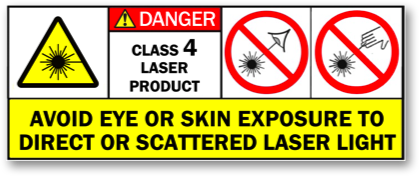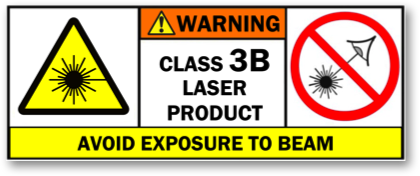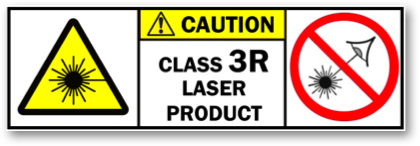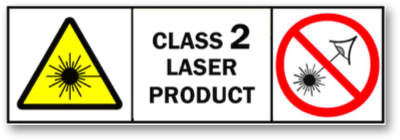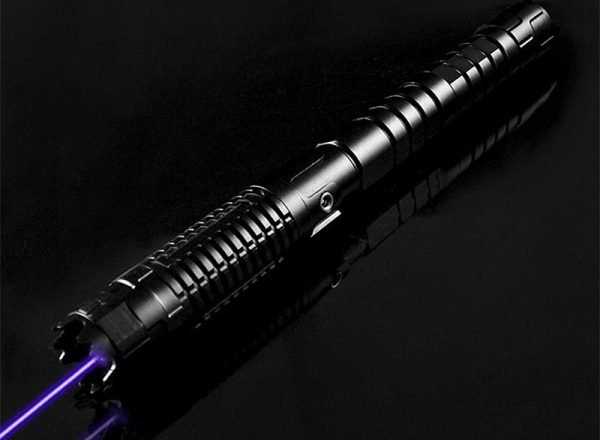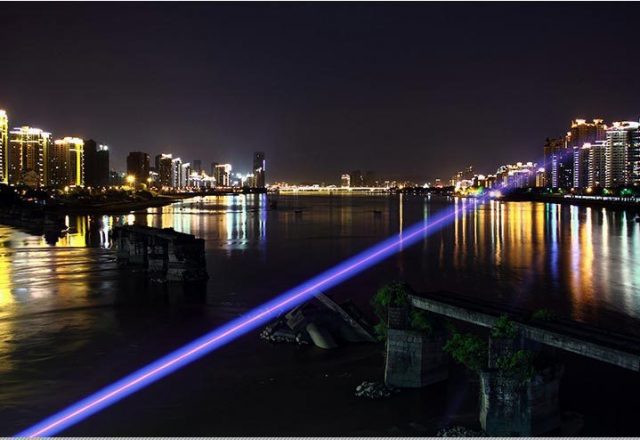WHAT IS A CLASS 4 LASER? Class 4 lasers are hazardous for eye exposure. They also can burn skin and materials, especially dark and/or lightweight materials at close range. They should be used with extreme care. For visible-light lasers, Class 4 lasers’ have an output power 500 milliwatts and above. There is no upper limit…
Author: htpow
Class 3B (IIIB) Laser Safety Information
WHAT IS A CLASS 3B LASER? Class 3B lasers are hazardous for eye exposure. They can heat skin and materials but are not considered a burn hazard. For visible-light lasers, Class 3B lasers’ output power is between 5 and 499 milliwatts. Class 3B Laser Pointer is the same as the Roman numeral “Class IIIb” you may see…
Class 3A (IIIA) Laser Safety Information
WHAT IS A CLASS 3A LASER? Class 3A lasers are considered safe when handled carefully. There is only a small hazard potential for accidental exposure. For visible-light lasers, Class 3A lasers’ output power is between 1 and 4.99 milliwatts. Class 3A Laser Pointer is essentially the same as the Roman numeral “Class IIIA” you may see on…
Class 2 (II) Laser Safety Information
WHAT IS A CLASS 2 LASER? Class 2 lasers are considered safe for normal operation. Class 2 lasers’ output power is below 1 milliwatt. All class 2 laser pointer emit visible light only. Class 2 is the same as the Roman numeral “Class II” you may see on some lasers’ labels. A Class ii laser is relatively…
About Laser Classes
Lasers are classified for safety purposes based on their potential for causing injury to humans’eyes and skin. Most green laser pointers products are required by law to have a label listing the Class. It will be listed either in Arabic numerals (1 2, 3A, 3B, 4) or in Roman numerals (I, II, IIIA, IIIB, IV). Classe 1…
When does a laser pointer get powerful enough to be dangerous?
There is no specific threshold between a powerful laser beam, a potentially hazardous one, and a clearly dangerous beam. The following are some guidelines. Bright Light Hazard Even a 5 milliwatt laser pointer can be a potential hazard if the green laser light distracts or temporarily flashblinds a person such as a pilot. This is why you…
Blue Light Hazard
Blue-light Hazard is defined as the potential for a photochemical induced retinal injury resulting from radiation exposure at wavelengths primarily between 400 nm and 500 nm. The mechanisms for photochemical induced retinal injury are caused by the absorption of light by photoreceptors in the eye. Under normal conditions when light hits a photoreceptor, the cell…
Application Analysis of New Generation
Low power direct semiconductor lasers are mainly used in plastic welding and soldering. In the plastic welding, laser welding with weld size precision, non-contact welding, mechanical stress, low thermal stress, welding appearance integrity, no welding slag and other advantages. In the solder, the laser welding with no welding head, non-contact, welding time is short and…
Advantages of UV Lasers
The laser beam is usually a mechanical printed circuit board that provides low voltage replacement methods such as milling or automatic circuit board cutting. However, UV lasers have the advantage that other lasers do not have, that is, they can limit thermal stress. This is because most UV laser systems operate in a low power…
The Next Decade Laser Lighting Will Replace LED Lighting
Laser lighting is a laser as a light source, but not directly to the laser “on the road”, so I am afraid that titanium eyes are really going to be blind. Laser lighting visible light laser lighting and infrared laser lighting. Visible light blue laser pointer lighting, according to the principle is divided into the following two:…
